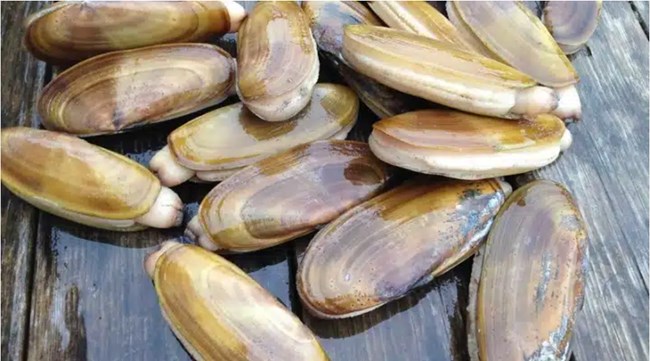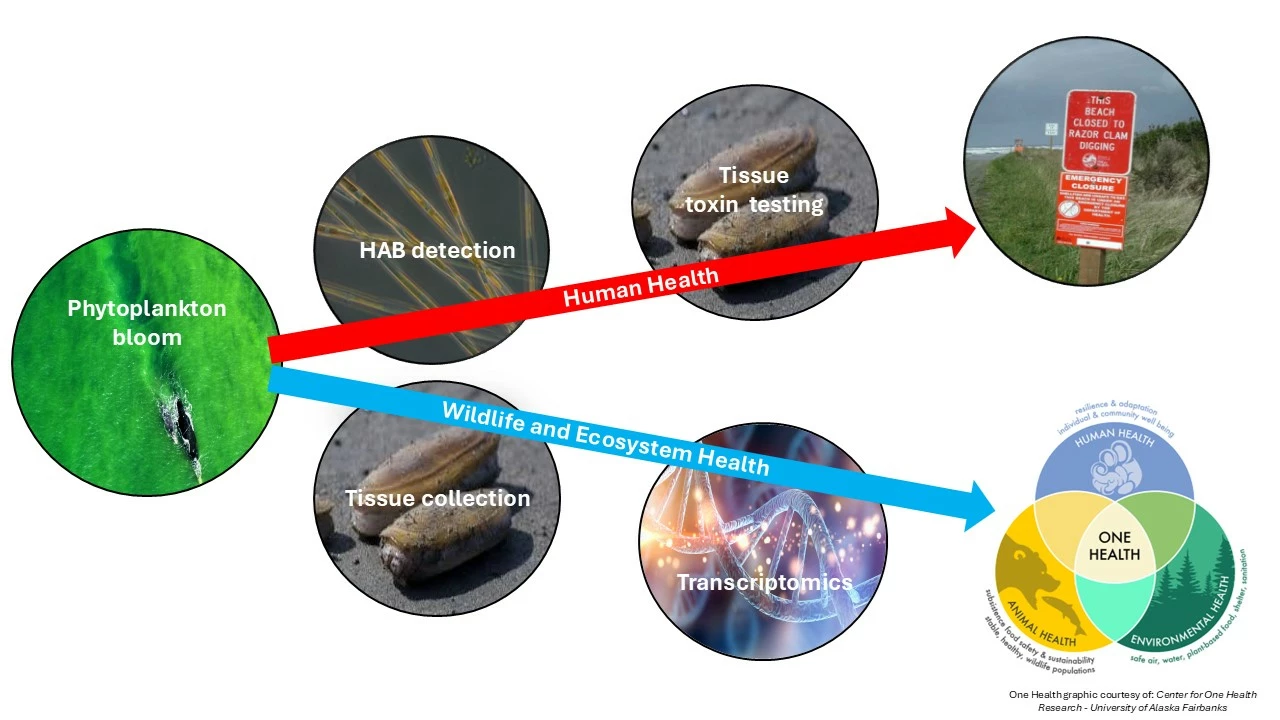Last updated: May 27, 2025
Article
The genetic response of Pacific razor clams to domoic acid

National Oceanic and Atmospheric Administration
We expect that chronic exposure to DA may disrupt important cellular processes, leading to concerns about effects on their overall health and potential population- and ecosystem-level impacts to clams. To study this, we looked at differentially expressed genes in razor clams before, during, and after a DA-producing bloom. We found changes in the genes that show signs of DA exposure, even in clams with low toxin levels. Targeting these genes in real-time using PCR (polymerase chain reaction) assays may provide an early warning system for routine monitoring of DA in clams. (This is the same kind of testing used to detect or diagnose some infectious diseases or genetic changes.) In addition, this research helps us understand how DA exposure (even at low levels) may affect clam health, which could have ramifications to clam populations and overall ecosystem health.

Transcriptomics as an Early Warning of Domoic Acid Exposure in Pacific Razor Clams (Siliqua patula)
Abstract
As oceans warm, harmful algal blooms (HABs) are expected to increase, including blooms of Pseudo-nitzschia, a diatom that produces domoic acid (DA), which is a potent neurotoxin. Regulatory limits for human consumption (0.075–0.1 mg/kg/day; acute exposure) exist for the Pacific razor clam; however, fisheries currently do not have regulatory limits for chronic low-level exposure to DA even though razor clams can retain DA for over a year after an algal bloom. For bivalves, exposure to marine toxins may disrupt important cellular processes, leading to concerns about effects on their overall health and potential population- and ecosystem-level impacts. Transcriptomics was used to identify differentially expressed genes in razor clams (N = 30) from Long Beach, WA, collected prior to, during, and after a DA-producing bloom. Differentially expressed genes were identified that may indicate exposure of razor clams to DA, including clams with tissue DA concentrations that fall below regulatory limits for human consumption. Targeting these genes in real-time PCR assays may provide an early warning system for routine monitoring of DA in clams. Our results suggest DA exposure is associated with physiological responses ranging from decreased immune function to the potential disruption of cell communication, including retinoic acid catabolic processes, cell adhesion, collagen fibril organization, and immune effector processes. This work may also allow us to examine potential drivers of population-level change and whether chronic lower-level exposure to DA negatively impacts razor clam function, consequently affecting individual and population health.Bowen, L., S. Waters, B. Ballachey, H. Coletti, Z. Forster, J. Li, and B. Jenner. 2025. Transcriptomics as an early warning of domoic acid exposure in Pacific razor clams (Siliqua patula). Toxins 17(4): 194.
